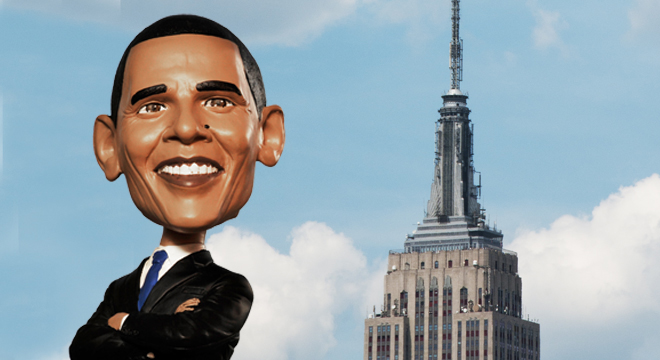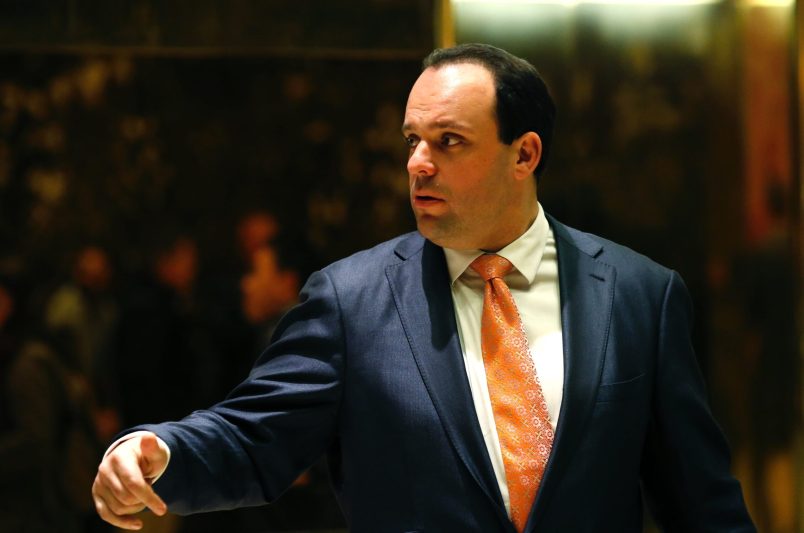We’re taught to think of liberal New York City and Republican-ish upstate to understand New York state. But TPM Reader JH notes that in recent years, in national elections, even ‘Upstate’ now appears to be solidly Democratic …
It really is not necessary to look beyond New York City to explain President Obama’s very strong polling numbers in New York State. Here’s why.
In 2008, voters in 62 New York State counties cast ballots. Thirty six of those counties went for Obama, and 26 went for McCain. Of the 36 Obama counties, only 7 gave him victory margins above 25%. Counties comprising four of the 5 boroughs of New York City were among those seven. These were Bronx, New York (Manhattan), Kings (Brooklyn) and Queens counties. The fifth NYC borough is Staten Island (Richmond County), and it went for McCain.
The vote totals in the 4 pro-Obama NYC counties, by comparison with those in the rest of the state, establish New York City as the central factor in Obama’s 2008 supersized victory margin, and the most likely explanation for his similarly strong 2012 polling lead.
In 2008, a total of 7,557,429 votes were cast in New York State for Obama or McCain. Obama’s share of that vote was 64%, McCain’s 36% – a 28% difference. Looking at this 28% difference, one might understandably feel that New York State does sport an especially deep shade of blue.
Looking at these numbers more closely tempers that view, however. In 2008, the 4 pro-Obama NYC counties yielded a total of 2,436,286 votes for Obama or McCain. Obama’s share of that total was a whopping 82%, McCain’s a meagre 18%. To quote a famous and beloved New Yorker, “Holy Cow!”.
Compare this to the vote totals for the rest of the state. Excluding the 4 pro-Obama NYC counties, a total of 5,121,143 votes were cast for either Obama or McCain. Obama’s share of that total was 54.8% and McCain’s was 45.2% – a 9.6% difference. This is a figure that anyone running for office would be thrilled with, but not one that suggests that (New York City excluded), New York State stands significantly apart from other blue states in its support for democrats.
TPM Reader BC makes a related point that contrary to popular wisdom Obama does not do poorly in agricultural parts of the country. He does poorly in southern agricultural parts of the country …
I’ve been thinking about your question on why NY State is going so strong for Obama. I feel that I have, if not a special insight, at least some useful observations of the situation.
To start with, I’m a lifelong New Englander who has, for the past five years, been getting my doctorate at the University of Michigan, Ann Arbor (I’m actually now back home in ‘the field’, i.e., 18th c. Mass. Town Records). In the course of this, I’ve driven and taken the train many times between Ann Arbor and my natal Gulf of Maine, and I think I understand part of why Obama is doing so well in NY State.
The Empire State, as you said, is hugely diverse, from Montauk Point to Lake Erie, from Battery Park to Mt. Marcy; it’s just huge, on a scale not much found in the northeast. In addition, unlike, say, Pennsylvania, which is also huge and at least, for census purposes, in the Northeast, New York’s vast hinterland contains many large and medium cities: putting aside NYC, there is the string of Hudson Valley towns — Poughkeepsie, Newburgh, etc. — and then Albany; further west, Utica, and Syracuse; Rochester is its own metro region, as is Buffalo. And then the whole slew of smaller, but still significant, cities — Batavia, lattsburgh, Rome. And finally you have the liberal sprinkling of college towns throughout the state —
Ithaca, Binghamton, Oneonta, Potsdam. And then there are several vast rural regions — the Adirondacks, the North Country, the Catskills; further west, the vast Allegheny country, the uppermost valley of the Mississippi.So why is Obama able to unite these widely disparate elements? I think it has to do, inter alia, with a combination of two facets of Obama’s political personality. On the one hand, and I don’t mean this in an ‘arugula’ caricature way, Obama is clearly a candidate that does well in large, left-of-center megalopolises, such as NYC. But, on the other hand, he also came up representing struggling neighborhoods in the industrial — and agricultural — Midwest’s largest city. So he unites voters both on the South Side and in the Loop. Look at NY — it’s a combo of industrial, northern tier, rustbelt cities and Manhattan, electorally speaking. I think his ability to speak to both of these groups in a way that, say, John Kerry
could not, is significant.Finally, much of NY State is rural and agricultural, and Obama does actually very well with rural, agricultural voters _just so long as they are northern_. He is relatively popular in NH and Maine for a black Democrat. What I mean to say is(here the historian in me comes out), we get the idea from the media that the rural voter can’t stand Obama. But looking
at the three 19th c. strains of American migration — northern or Yankee, Midland, and Southern — we see that Obama does spectacularly poorly with the southern and midland rural regions, but not badly at all in rural states in what has been referred to as Greater New England: that Yankee nation that, spreading from Massachusetts Bay, spread into Vermont, New Hampshire and the Berkshires; and then through Upstate NY along the Erie
Canal; and finally through the Great Lakes states, along the northern tier of Ohio through Illinois, through Michigan and Wisconsin.New York state is a unique concatenation of all three of these factors — Eastern megalopolis, rust-belt cities, and the rural north — among which Obama does well, voters whom he understands and whose values he basically shares (the Yankee proclivity to communitarian forms is reflected in BHO’s political philosophy). This just isn’t so in either Massachusetts or Illinois — different combinations of these elements, but nothing that
fits Obama so well.Anyway, just this 18th c. American historian’s guesstimate/two cents.
And now, back to the dissertation! (in theory, at least).
Finally, TPM Reader AC points to a socio-economic transformation …
There are lots of factors in the development of a blue New York. New York has very few evangelicals (8%). Only Connecticut and Rhode Island have fewer.
Second, the state GOP has been poorly run, for one thing. How else can you explain running guys like Palladino?
But for my money, I’d note the disappearance of the upper and upper-middle classes from what had been the most Republican part of the state, Central and Western New York. When one lives in place like Syracuse, one is struck not by the poverty, but by the absence of truly wealthy people. The richest people in the region are doctors and lawyers, followed by various medical reps, followed by professors. There are a few manufacturing tycoons, but most fled to bigger cities years ago. Suffice to say, New Jersey and Connecticut don’t look like this.
Now, despite what the GOP tells you, wealthy folks vote disproportionately for the Republicans. But the country club set is currently thin on the ground in most of upstate.







